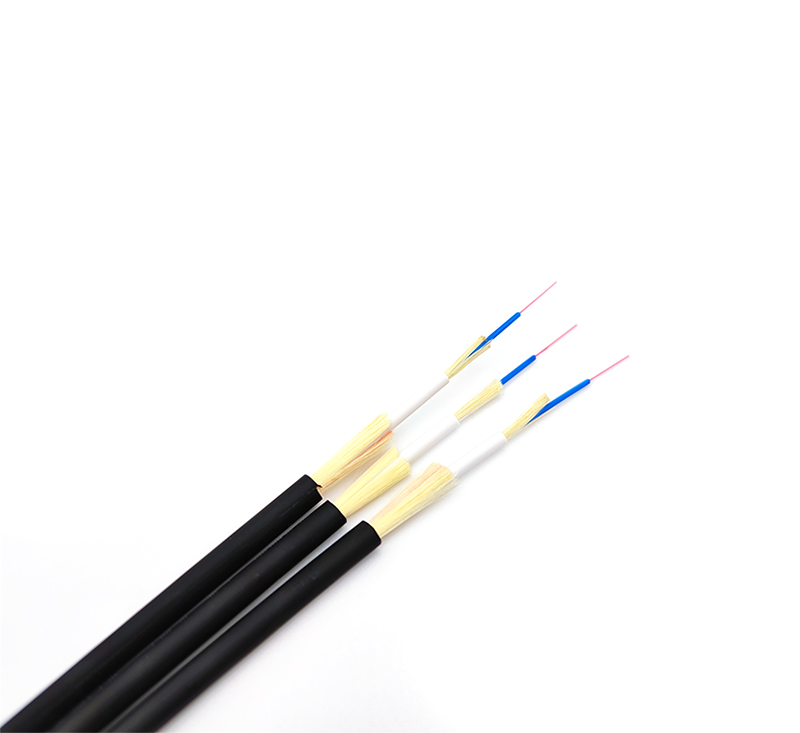Optical cables have the advantages of small size, light weight, long transmission distance, large capacity, low signal attenuation, and anti-electromagnetic interference, and have been widely used in various networks. Optical cables have become the main body of special networks such as communications, network data transmission, and cable radio and television in my country. When selecting twisted pair cables and coaxial cables, the performance can be generally judged through visual inspection and simple tests, but the selection of optical cables is not so simple. Compared with twisted pair cables and coaxial cables, not only the structure It is complex and has a wide variety of materials. In addition to the existing technical parameters, there are many potential factors (materials, production technology, equipment, etc.). The parameters are not necessarily up to standard. Therefore, when we are building a network, it is necessary to have an in-depth understanding and understanding of the structure, materials, and technology of the optical cable, so as to choose an optical cable with a suitable model and excellent quality.

1. Select the optical cable according to the number of cores
According to the number of cores, the structure of different types of optical cables can be divided into layered type, skeleton type, ribbon type and central bundle type. Generally, the central bundled tube type is used for 12 cores or less. The central bundled tube type has a simple process and low cost, and is competitive in the branch and trunk network with overhead laying or good pipeline protection. The steel wire is reinforced, and the SZ continuous synthetic cable is used, and the number of fibers into the cable can reach 144 cores. Its biggest advantage is waterproof, strong side pressure, and strong pull resistance. Can be used for direct burial. At the same time, it is easy to split, that is, when part of the optical fiber of the optical cable needs to be used separately, it is not necessary to disconnect the entire optical fiber cable, but only the optical fiber to be branched can be disconnected, which is very important for the data communication network. It is advantageous to add optical nodes along the cable television network; the number of cores of the ribbon optical cable can reach thousands of cores. It arranges 4 to 12 core optical fibers in a row to form a ribbon optical fiber unit, and then multiple ribbon units are arranged according to a certain amount. The method is arranged into cables. Our network-level optical cables generally use two types: bundled and continuous.
2. Select the optical cable according to the application
According to the purpose of purchasing the corresponding optical cable According to the different uses, the optical cable can be divided into overhead optical cable, pipeline optical cable, direct buried optical cable, submarine optical cable and metal-free optical cable. Aerial optical cables require high strength and small temperature difference coefficient; pipeline optical cables and submarine optical cables must be resistant to water pressure, tension, and waterproof; The metal optical cable can be erected together with the high-voltage line, and the insulation is better. Although there is no iron reinforced core, it must have a certain tensile capacity. Therefore, when purchasing an optical cable, users should choose according to the purpose of the optical cable, and put forward requirements to the manufacturer to ensure that the optical cable is stable and reliable.
3. Select the optical cable according to the material
The material used in the optical cable and the production process The selection of the optical cable material is the key to the service life of the optical cable. The manufacturing process is an important link that affects the quality of optical cables. Products with stable processes and good quality are basically not included in the additional loss of optical fibers in the whole process of optical cable production. The main materials of optical cable are: fiber core, optical fiber ointment, sheath material, PBT (polybutylene terephthalate), which all have different quality requirements, and the fiber core requires a large power charging capacity. Higher signal-to-noise ratio, lower bit error rate, longer amplifier spacing, higher information carrying capacity; optical fiber ointment refers to the ointment filled in the fiber bundle tube, and its function is to cushion the optical fiber. The second is to prevent moisture in the air from eroding the optical fiber, and the buffered optical fiber is affected by vibration or shock. The ointment has strict quality requirements, emphasizing ultra-low hydrogen evolution, ensuring good low temperature characteristics of the optical cable, and preventing "hydrogen loss" from causing serious damage to the optical cable. The sheath material plays a very important role in the long-term reliability of the optical cable, and is the key to determining the tensile, flattening, bending characteristics, temperature characteristics, resistance to natural aging (temperature, irradiation, chemical corrosion) characteristics of the optical cable, as well as the fatigue characteristics of the optical cable. Therefore, high-density polyethylene material (PE) should be selected, which has high hardness, good tensile and compressive properties, and the outer skin is not easy to be damaged; PBT is a thermoplastic engineering plastic for the secondary plastic wrapping (bundle tube) of optical cables, and must have Young's modulus. High (1600/mm2), low wire tension coefficient (1.5 × 10-4), good chemical resistance, low friction coefficient, good processing characteristics and so on. PBT material is used as fiber optic sleeve, so that the fiber optic bundle tube unit has good resistance to lateral pressure and temperature characteristics. In places with high requirements for hydrolysis resistance, in order to ensure the long life of the optical cable, hydrolysis-resistant PBT materials must be used.










